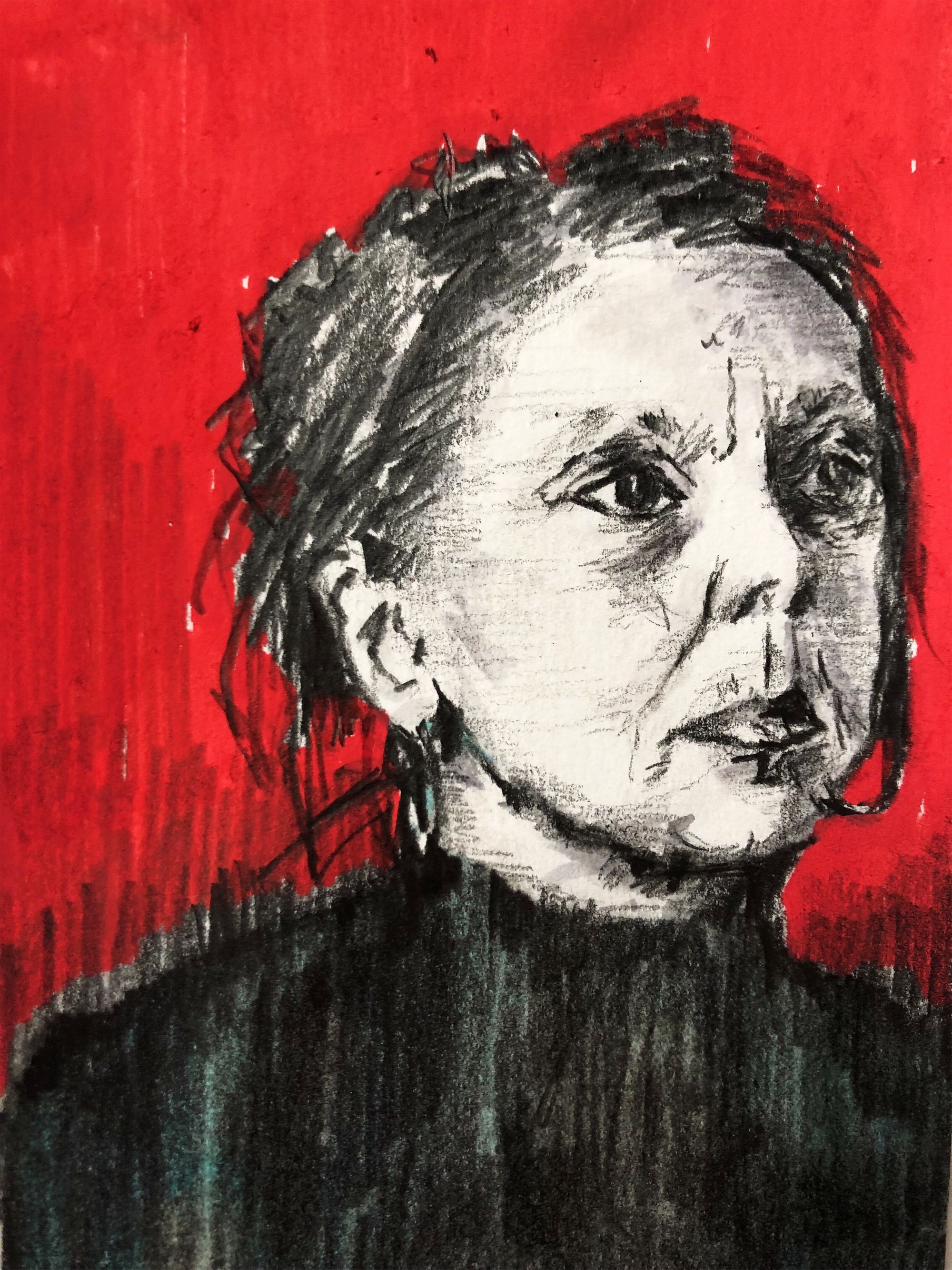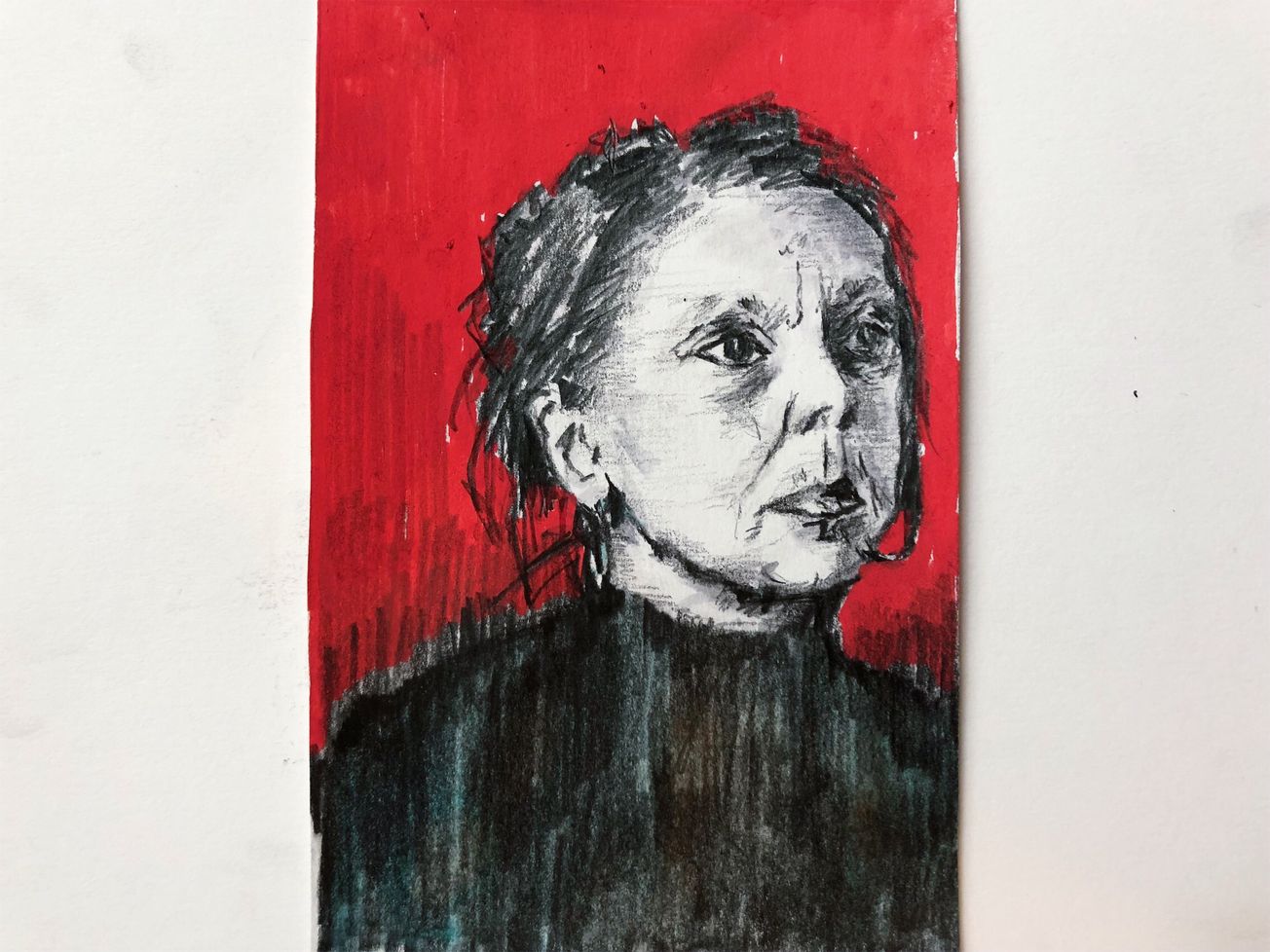By Serafina Lee, Deputy Digital Arts Editor
Anne Carson's work is notoriously elusive; her fragmented poetic style delivers a unique reading experience. In connection with Meriç’s Algün’s spectacular solo exhibition, ‘Day Craving Night’, Spike Island ran a panel event, 'Finding the Edge: The Writing of Anne Carson’ to discuss the oeuvre of one of Algün’s major artistic influences.
As an Anne Carson beginner, I only had a vague conception of her fragmentary style, but was struck by the insightful, organic depth of the conversation and the knowledge of the highly qualified panelists. Leading the discussion was Dr Laura Jansen, a Senior Lecturer in Classics and Comparative Literature here at the University of Bristol; she is currently working on editing a volume of Anne Caron’s work. She was joined by poet, translator and Lecturer in the School of Modern Languages also here at Bristol University, Dr Rebecca Kosick, alongside renowned award-winning poet, Alice Oswald, who has won a plethora of prizes, including a Ted Hughes Award. The talk was a non-scripted organic discussion, swaying into a variety of topics. In discussing the multitudinous modes of such an elusive writer, such an approach really opened up Anne Carson’s multiple perspectives. This is a writer who works in abundance, weaving a fragmented constellation that is impossible to pin down to one single interpretation.
| 'Day Craving Night' exhibition preview at Spike Island: in conversation with Meriç Algün

One of the first points expressed was the sheer restlessness of Carson’s work, it is laced with a metamorphic quality that avoids categorisation. Carson is a translator and professor of Classics as well as a poet, and the panelists really delved into the effects that translation can have on the poetic process. Carson is renowned for her translations of classical writers, pulling the ancient into the modern. Her recent work, Nox, is an elegy created through an accordion-style, strongly visual notebook, almost resembling an artefact which memorialises her brother. She reworks Catallus 101 through translated fragments; Carson is concerned with the bordering liminality between the original meaning of words and the attempt to translate them into an entirely different language. The panelists explored the experiential process of translation, describing it as groping in a darkened room for the light switch. Such ‘moments of indecision’ exemplify the disjunction between the original word and the adaptation; Carson navigates the bordering edge between such a transferral, and how this alters meaning.
| AMRA preview @ Spike Island: in conversation with Imran Perretta and Paul Purgas
Thanks Laura Jansen, Rebecca Kosick @UoBrisBPI & Alice Oswald for discussion about Anne Carson’s work @_SpikeIsland tonight. Interesting & accessible talk even for a Carson beginner. pic.twitter.com/D0sL92KQTw
— Josephine Corcoran (@And_OtherPoems) November 21, 2019
Carson is as much a philosopher as a writer, steering reading experience through non-linear images and fragments. The panelists outlined the boundlessness of her work, how her abundance of fragments allows expanded possibilities; her words are trying to stretch out to hint at something larger than themselves. She describes words as 'wild integers’ in the system of language, impossible to pin down and always containing a sense of instability when stringed along together. This, however, raises questions about her own poetic voice, which can appear strangely disembodied from her work. Sam Anderson describes this as ‘the paradox of distant closeness’ - the strange absence of authorial voice even in subjects that are deeply personal. Even whilst depicting the death of her brother, we still are not privy to her direct emotion, our perspective is from a detached position looking in.
Carson describes words as 'wild integers' in the system of language
Carson is not concerned with legibility or the reader. Reading her work can be a confounding experience, we are forced to independently cross reference her many allusions. Alice Oswald beautifully described the texts as a half-hearing experience, as you move through the text some parts appear muffled and unclear, and yet they still retain a genuine communicative intention. You need to yield to her words and let yourself be carried through them; Carson's voice is unconstrained.
Featured Image: Harry Sullivan
Who is your favourite poet?









